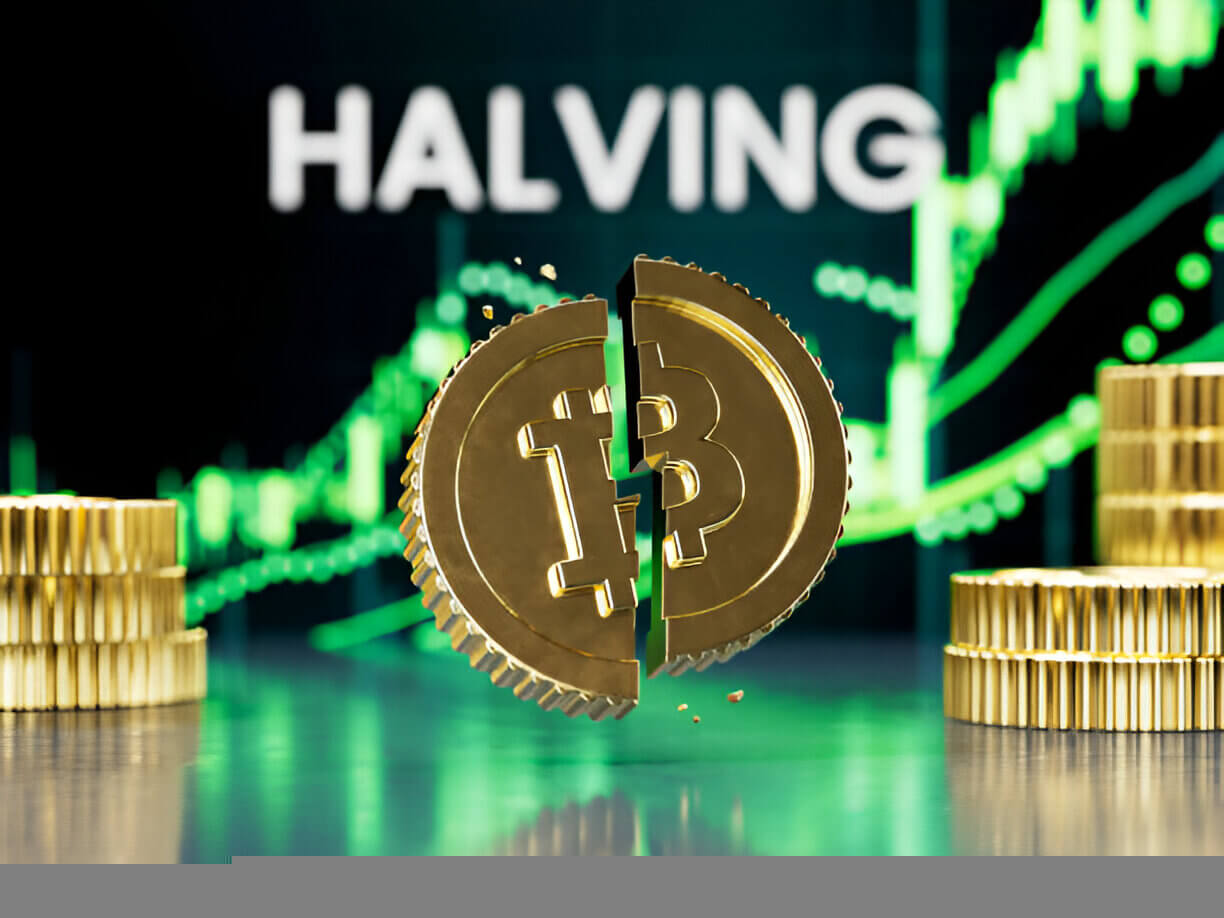By Frasat Ali – April 10, 2025
Bitcoin’s post-halving performance in 2025 has left many investors scratching their heads. After a stellar pre-halving rally, the price has stalled. Why the sudden slowdown? Let’s take a closer look at the market dynamics and what might come next for the world’s leading cryptocurrency.
The Halving Effect and Expectations
Every four years, Bitcoin’s block reward gets cut in half—a process known as the “halving.” Historically, this event has triggered massive price increases as reduced rewards lead to lower supply. With the 2024 halving event, many expected another bullish cycle to follow, similar to what happened in 2016 and 2020.
Before the halving, Bitcoin saw a steady increase in value. By the end of 2024, it was trading above $90,000—setting the stage for a big post-halving jump. But here we are in 2025, and the price has remained flat. What gives?
Supply and Demand: The Basics of Bitcoin’s Price
Bitcoin’s price is driven by supply and demand. When supply drops—thanks to a halving event—theoretically, the price should go up as demand outpaces the available coins.
However, supply-demand dynamics aren’t always straightforward. In this case, there was already a lot of hype and anticipation leading up to the halving. By the time it happened, much of the expected increase in demand had already been priced in. Essentially, the market had “front-run” the event.
Add in macroeconomic factors like inflation and regulatory uncertainty, and the demand for Bitcoin simply hasn’t matched expectations.
The Role of Institutional Investors
A key player in the 2025 Bitcoin market is institutional investors. Large financial firms and hedge funds have been buying up Bitcoin in recent years, hoping to diversify their portfolios and hedge against inflation. But here’s the issue: institutional investors tend to be cautious and can be easily spooked by market volatility or regulatory crackdowns.
In 2025, we’ve seen some hesitation from institutions. Some are waiting for clearer regulations. Others are concerned about the broader economic environment, including the ongoing trade tensions between the U.S. and China. This cautious stance has kept Bitcoin’s price from skyrocketing post-halving.
Market Saturation and Investor Sentiment
Bitcoin’s rise to prominence has brought a flood of new investors into the market. However, there comes a point when a market becomes saturated. In other words, many of the people who were likely to buy Bitcoin have already done so.
Right now, the market is experiencing what we might call a “sentiment reset.” The excitement of Bitcoin’s early years is fading. People are looking for the next big thing. Meanwhile, Bitcoin’s volatility—while still high—doesn’t have the same allure for new investors.
The lack of new, eager investors is contributing to the stall in price. To really see another surge, Bitcoin will need fresh demand, whether it’s from retail or institutional players.
Regulatory Uncertainty: The Silent Killer
One of the biggest hurdles Bitcoin faces in 2025 is regulatory uncertainty. Governments around the world are still figuring out how to treat cryptocurrency. Some countries, like El Salvador, are pushing to make Bitcoin more mainstream. But others, like China, have cracked down on mining and trading, making investors nervous.
In the U.S., the Securities and Exchange Commission (SEC) continues to scrutinize crypto exchanges and projects. This regulatory pressure creates an environment of uncertainty, which can be detrimental to investor confidence.
While many still believe Bitcoin is a safe store of value, the regulatory cloud hovering over the industry is keeping some investors on the sidelines. Without clear guidelines, big players may continue to hold back, preventing Bitcoin from gaining the momentum it needs.
The Halving Cycle Is Not a Guarantee
While the halving event has historically led to price increases, it’s not a guarantee. Each halving is unique, and market conditions can drastically change from one cycle to the next. Bitcoin’s journey post-halving in 2025 has been a reminder that historical patterns are not always reliable.
Bitcoin’s price has often been influenced by factors like macroeconomic conditions, investor behavior, and global events—things that a halving event alone can’t control. This is why predicting price movement purely based on halvings is risky. There’s always a mix of other variables at play.
What’s Next for Bitcoin in 2025?
So, what can we expect from Bitcoin moving forward? There are a few scenarios to consider.
Scenario 1: The Slow and Steady Recovery
If the market continues to adjust to new regulations and macroeconomic conditions, Bitcoin could see slow but steady growth. We might not see the explosive price action we’ve seen in past cycles, but Bitcoin could still rise gradually over the next few months.
Scenario 2: A Regulatory Breakthrough
If governments provide clearer, more favorable regulations, we could see a surge in institutional investment. This could act as a catalyst for Bitcoin’s next big move, pushing the price back up into the $90,000+ range, or higher.
Scenario 3: The Bearish Scenario
If inflation continues to rise or there’s a global economic downturn, Bitcoin could see further stagnation or even a downturn. However, Bitcoin’s track record as a store of value during economic uncertainty could prevent it from dropping too drastically.
Should Investors Be Concerned?
No need to panic just yet. Bitcoin has faced periods of stagnation before. The price may be stalled for now, but its long-term prospects remain strong. While it may not have exploded in price post-halving, its fundamentals are still in place.
Bitcoin’s role as a hedge against inflation, its decentralized nature, and its growing acceptance in global finance mean that it still has plenty of room for growth. However, as with any investment, patience is key.
If you’re invested in Bitcoin, it’s important to stay calm and not react impulsively to short-term market movements. Keep an eye on macroeconomic conditions and regulatory changes, but remember that the cryptocurrency market is known for its volatility.
Conclusion
The 2025 Bitcoin halving didn’t deliver the immediate price spike that many expected, but that doesn’t mean the story is over. The market’s reaction shows that multiple factors are at play. Supply and demand, institutional interest, regulatory concerns, and market sentiment all factor into Bitcoin’s price.
For now, Bitcoin is in a holding pattern. But with its long-term potential still intact, it’s far from the end of the road. As the market continues to mature, new opportunities may arise. Stay informed, stay patient, and keep your focus on the bigger picture.

About The Author
Name: Frasat Ali
Role: Founder & Lead Analyst at LatestCryptoInfo.com
Experience: 5+ Years in Blockchain & Cryptocurrency Markets
Specializations: Bitcoin, Ethereum, DeFi, NFTs, and Crypto Regulations
Frasat Ali is a seasoned cryptocurrency analyst with over five years of hands-on experience in blockchain technology, trading, and market research. As the founder of LatestCryptoInfo.com, he is dedicated to providing accurate, unbiased, and actionable crypto news to help investors make informed decisions. Read More
🔗 LinkedIn: linkedin.com/in/frasataliofficial
